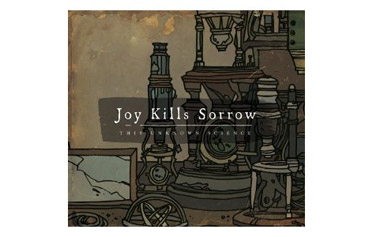Joy Kills Sorrow
This Unknown Science
(Signature Sounds)
The artwork on This Unknown Science features illustrations of complex antique technology in somber, sepia-tinted colors. The drawings are loose and playful, but the overall presentation is slick and masterful. Much the same can be said for this collection of new music from Joy Kills Sorrow.
Elegant, melancholic melodies with wise, wistful lyrics are offered up on a bed of precision string instruments (notably banjo, mandolin and cello) and seasoned with sweet harmonies. Sometimes the arrangements become a little overly complex and don’t work quite as may have been intended, but often the songs mix restraint and passion in rewarding balance.
Apple iTunes tells me they’re a country band, but their songs reminded me more of the work of Jonatha Brooke and occasionally The Be Good Tanyas. Joy Kills Sorrow plays Sept. 30 at the Iron Horse. —Mark Roessler
*
Razika
Program 91
(Smalltown Supersound)
Taking their band name from a codeword for a cute guy, this quartet of 19-year-old Norwegian girls revels in its unabashed love for all things pop on this debut. The album opener “Youth” glides along breezily on a chorus of “doo doo doos,” while the ska-influenced “Taste My Dream” alternates between bouncy verse sections and beat-heavy breakdowns. Elsewhere, a particular highlight that could also serve as the band’s mission statement is the cover of fellow Norwegians and ’60s popsters The Pussycats’ “Why Have We to Wait.” Vocalist Marie Adam sings, “Why have we to wait so long?/ People say we’re far too young/ Can’t you see that’s wrong?” While over half of the record is performed in the girls’ native language, the mostly acoustic finale “Walk in the Park” is sung in English and offers a glimpse of great things to come. —Michael Cimaomo
*
Wilco
The Whole Love
(Anti-)
The new one from Wilco is a set of songs from all over the rock map. It starts with a massive wash of electronic ambience giving way to a weirdly grooving, compelling tune called “Art of Almost” that visits several extremes of the sonic spectrum, ending in a hard-hitting flurry of guitar. The CD then meanders through tunes that range from a blandness that’s surprising from a band oft cited as a major force in American rock to finely honed rock-pop high points. A lot of tunes offer bubbly, poppy excitement that borrows much of its palette from The Beatles. There’s a lot of balladry here, too, and it doesn’t offer much to hang one’s hat upon melodically until “Rising Red Lung,” a contemplative and folky outing that inhabits the emotion of its lyrics to grand effect. The Whole Love is a mixed bag, but its high points are likely to invite repeated listens despite its recurrent doldrums. —James Heflin



